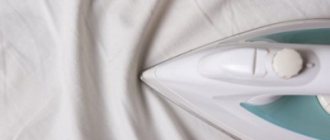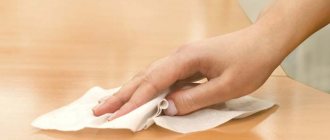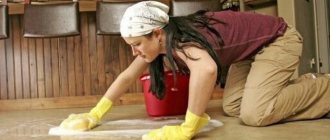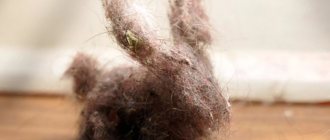Where did the rule come from?
Everyone who has had to participate in the process of wallpapering has heard about the rule. But not everyone was eager to receive detailed information on why drafts should not be allowed. Therefore, this law of wallpapering has become a truism.
If it dries unevenly, paper wallpaper wrinkles. If you allow a sharp temperature change in a particular area through a flow of cold air, the fabric will partially become covered with bubbles, will become deformed and may peel off.
Interesting! Indeed, when wallpapering, you need to close the windows and doors tightly so that a natural, uniform drying process occurs. This applies to all types of materials, but to varying degrees. An open window, regardless of the type of material and glue, can have a bad effect on this process.
Why you can’t open windows and doors after finishing work
This is necessary so that the glue does not dry out too quickly. Otherwise, the canvas will peel off partially or even completely - you will have to constantly glue joints or entire strips.
Paper and non-woven wallpaper are especially afraid of drafts and sudden temperature changes. Vinyl wallpaper does not react so strongly to changes in temperature and humidity, but it can also wrinkle and peel off, so it is advisable not to open windows and doors until they are completely dry.
Even a small draft and change in temperature can cause swelling to appear on the surface of the canvas; the wallpaper will begin to lag behind the surface, wrinkle and crack. In particularly severe cases, the entire work will have to be redone.
The minimum period during which windows cannot be opened after wallpapering is 3 days. If non-woven wallpaper was used, it is better to keep the windows and doors closed for at least 5 days.
Source: folksland.net
Current relevance of the rule
The “closed window” rule for paper canvases is still relevant today.
To get a beautiful canvas without defects, you must comply with the following conditions:
- During work and for 2 days and after, do not allow a draft through an open window. Wallpaper (paper) dries in about 12 hours at 20 degrees; if the temperature is lower, it may take a little longer, so 2 days will be enough with a margin. After exactly 12 hours, it is better not to open the window, because it is difficult to precisely meet the conditions for drying within the specified period.
- Do not change the humidity in the room by turning on the air conditioner. During the evaporation of moisture, the room will become stuffy, but this will only facilitate the process. The air should not be humidified; evaporated moisture will do this without additional intervention.
- There is no need to speed up the process with a fan, because air flows will disrupt the uniform temperature distribution. You should also avoid using a heater.
Reference! You can simply assess the degree of drying of the wallpaper - by touch. If they are already dry, you need to give them a little more time; if they are wet, you need time to dry completely and wait a couple more hours for insurance.
Non-woven and vinyl – should you be concerned about them?
The fact that when gluing wallpaper you cannot open the windows is said about any canvas, including non-woven and vinyl. In some cases, it is recommended to prevent air flow for a week. This is due to the fact that non-woven wallpaper takes longer to dry.
It is known for sure that non-woven fabric is not as afraid of cold air flows as paper. This is explained by the fact that the top layer of the canvas is not saturated with glue and dries almost immediately. You can hear that someone left the windows open without any consequences.
Reference! Strong and sudden temperature changes and cold air flow can also damage non-woven fabrics. Therefore, we can talk about a successful experience of gluing with an open window only at above-zero temperatures in warm weather in the summer.
You can open the windows after hanging non-woven and vinyl wallpaper, but it is recommended to wait at least a day. This time is enough to prevent deformation.
Regarding non-woven fabrics, more problems may arise due to incorrect gluing technique than due to working with the window open.
What is important is that it is not recommended to carry out other repair work in a room with damp wallpaper. This may affect the quality of the canvas that is not yet completely dry. Some work significantly raises the temperature, while others can cause peeling of individual areas.
On video: Why you can’t open windows while wallpapering.
How long will vinyl wallpaper take to dry?
Many people know that for the wallpaper in a room to completely dry, it will take at least 48 hours, or even 3 days. If you have properly prepared the walls, putty all the small holes, and chosen high-quality glue, then the vinyl wallpaper in your bedroom, living room or nursery will dry in 48 hours.
Related article: Plastic putty will help repair damaged parts
Windows cannot be opened at this time. Work can be done inside. For example, attach and paint baseboards with paint that does not have a strong odor. You can paint, update radiators, pipes, window sills and the inside of the wooden window frame.
By the way, it will not be possible to install a suspended ceiling with the windows closed. It's too hot and stuffy. It is better to wait 2 days until the canvases stick securely to the walls.
It will not work to install air conditioning when the wallpaper is drying. To do this, you will need to open the window, then drill holes in the walls. When installing an air conditioner, you need to check how it cools the air temperature in the room, and how the wallpaper dries at a higher temperature. There are some nuances; you can simply wait two days until the vinyl wallpaper is completely dry and continue the repair further.
Wallpaper drying on the wall
Experts who have extensive experience in repairs recommend waiting with the internal work on installing skirting boards. Painting various surfaces. Vinyl wallpaper is capricious. You shouldn’t even enter the room again while they are drying. A whole strip or half of a room may come off. Your work will be wasted, and this material is no longer suitable for reuse. Need new rolls.
For colorful wallpaper, high-quality gluing is important
If you haven't bought enough spare ones, you'll have to go to a construction supermarket or go to the market and pick up the same ones. It's good if the picture matches. It happens that in different batches there is a slightly different shade of the background or pattern on the canvases.
Don’t even think about opening the door to the balcony until the wallpaper is dry.
It will be too noticeable in the room. Of course, if you don’t find the same ones, it’s not critical - you should live here, but it’s better to just wait until the vinyl wallpaper dries and you won’t have these problems.
What not to worry about
Certain points regarding the conditions for drying wallpaper require discussion; it is not immediately clear what the rule prohibiting opening windows when gluing includes. For example, it does not apply to adjacent rooms. In other rooms it is necessary to ventilate during repairs.
You should not wait a week in a stuffy room, especially when gluing non-woven and vinyl wallpaper. You just need to make sure there is no draft.
Walking indoors at high speed is not dangerous. Only a constant draft can have a bad effect on drying. There is no need to try to do everything smoothly, in fear of creating a draft. Several people can glue wallpaper, waving their hands as much as they like.
Leaving the door to the next room open is acceptable if there is no draft. If the air conditioner or fan is turned on, it is better to close the room.
It makes no sense to wait a few more days after the wallpaper has dried. Time required: 2 days. You can do more, but there is no need, and it is better to ventilate the room, which will be good for health.
In summer, in warm weather, when there is no wind, there is no need to worry about drying. The strips will dry evenly and without defects. The latter may appear during gluing, but they are easy to miss with the naked eye. Then you need to use methods to eliminate air bubbles after the glue has dried.
To get rid of air bubbles after the glue has dried, you need to:
- Fill the syringe with glue.
- Pierce the convex area with a needle.
- Release the product by pressing with your hand.
Reference! If the problem of air bubbles occurs in the corners, which is important for uneven walls, you can make small, unnoticeable cuts.
If gluing and drying occurs at a temperature of 20 degrees or more, there is no need to worry at all. The canvas will dry in about 12-16 hours. Having started work in the morning, the next evening you don’t have to worry about open vents, windows and doors.
Rules for wallpapering
Remember that windows and doors must be completely closed when covering walls.
Try to open doors slowly and carefully when leaving and entering a room. Why? You will create large air movements, in some places the wallpaper will come off and you will have to re-glue it, if not completely replace it with something else.
When you've already covered a quarter or half of the wallpaper, the room will become stuffy and you'll want to open the window. This absolutely cannot be done. You and your partners will have to endure from 2 to 3 days, and for non-woven wallpaper, a week is better, until they are completely dry along the entire length of the wall.
There is a special glue that dries quickly. After just 36 hours, you can open the windows and freely enter and exit the room. The glue has high adhesion, but if you don’t read it on the Internet or a specialist doesn’t recommend it to you, buy an ordinary compound, you’ll have to wait 2 or 3 days.
The wallpaper has taken its place on the wall, now you have to wait a little
Before opening the windows, check how dry the canvases are on the bottom and top - this is especially important. Feel the middle too. If you don’t feel damp, you can safely open the windows.
Some people use not only floor plinths, you can decorate with ceiling wallpaper and under the ceiling. This is not only a decorative element, this way the canvases will stick better and if you forget that you can’t open the door wide and slam, they won’t come off or fall off the walls.
Decorative ceiling plinth
On top of paper or vinyl wallpaper, you can attach a floor plinth and a border under the ceiling already on the second day. You shouldn’t do this so early with non-woven ones. The main thing is not to be greedy, generously coat the canvases with glue over the entire surface and they will reliably adhere to the walls. But here, too, keep it in moderation. The wallpaper should not get wet so that the glue is visible on the front side. Not all adhesives are transparent; some domestic compounds leave yellow spots, which is not aesthetically pleasing.
An interesting feature: when using a foreign composition, wet wallpaper may become a shade darker.
When you glue wallpaper, be sure to inspect it. If there are small air bubbles. It is enough to pierce them with a needle. Large swellings can be carefully cut along the edge with a paper knife and glued, releasing the air.
Related article: Which mop to choose for your home: review of the best models
Is it possible to turn on the fan?
The fan creates currents of cold air, which affects the wallpaper, just like an open window. It should be glued without it. Drying cannot be accelerated in this way, but it can damage the wallpaper. When working with non-woven fabric, you can turn on the fan at low speed.
The main precautions apply specifically to paper webs. They need to be glued in a warm room without drafts. Non-woven and vinyl wallpapers do not require such extreme caution, but you can play it safe if nothing prevents this.











